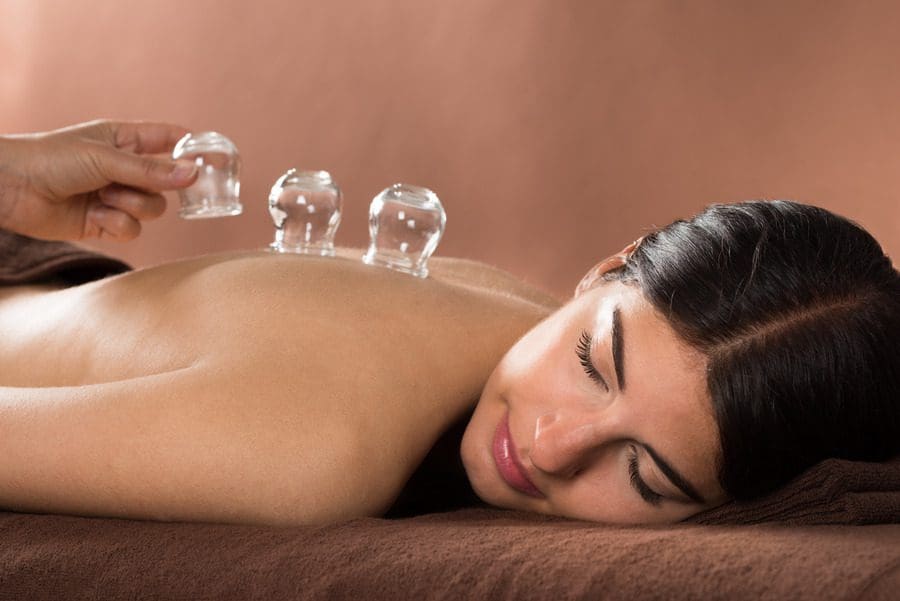Have you ever seen someone with a series of red circles on their back and thought, “What kind of torture did this person go through!?” You wouldn’t be the first to think that. But in reality, that person is probably reaping the benefits of cupping therapy. If you have ever wondered what cupping therapy entails, you have come to the right place. Today, we are sharing the ins and outs of cupping so you can decide whether it is right for you.
What Is Cupping Therapy?
Cupping is a type of alternative therapy that involves placing glass, plastic, bamboo, or silicone cups on the skin to create suction, which, in turn, can improve the energy and blood flow in your body and help reduce pain & inflammation. (More about benefits below!). The cups can be placed on the back, abdomen, chest, legs, buttocks, and even face (known as facial cupping or cosmetic cupping). Some people consider the feeling like a deep tissue massage.
How Does Cupping Work?
Cupping uses alcohol, paper, or herbs to heat the cup. Then, the open side of the cup is placed on the skin. The air in the heated cup then cools down, forming a vacuum that draws the skin and muscle into the cup. In some cases, your practitioner may use rubber pumps to create suction instead of traditional heating methods. Don’t worry if your skin turns red; this is a normal reaction as your blood vessels respond to the pressure. Any marks you get from cupping should disappear within a week after the session.
The Different Types of Cupping
There are four different categories of cupping.
- Dry Cupping: This method includes only suction. With this method, the practitioner places the cup in the same place for the entire session. It will last anywhere from 5 to 10 minutes.
- Bleeding Cupping: This method includes controlled medicinal bleeding and also suction. The practitioner will make a small incision in your skin and draw blood. Next, they will slowly pull blood out of the incision using the suction cup.
- Running Cupping: This method involves applying oil to the body and slowly moving the suction cup around in a massage-like motion. This session can last anywhere from 10 minutes to over an hour.
- Flash Cupping: With this method, a suction is formed and released quickly, usually in the same area of the body. The session typically lasts 5-10 minutes.
Practitioners can also use the following during cupping:
- Water
- Herbs
- Laser therapy
- Magnets
- Electrical stimulation
- Moxibustion
What Conditions Can Cupping Help With?
Cupping can help with the following conditions:
- Pain in the neck, shoulder, knee, or back
- Facial paralysis
- Shingles
- Headaches and migraines
- Acne
- Asthma
- Lumbar disc herniation
- Cough and dyspnea
- Rheumatoid arthritis
- Carpal tunnel syndrome
- Brachialgia
- Diabetes
- Hypertension
- Cervical spondylosis
Are There Any Side Effects to Cupping?
The side effects you may experience from cupping will happen during or after the session. It may include the following symptoms:
- Dizziness
- Discoloration
- Circle marks from where they have placed the cups.
- Bruising or scarring of the skin or pain at the incision
- Skin infection
- Sweating or nausea
Consult your practitioner if you experience any of these symptoms. They can give you steps you can follow or remedies you can use to avoid discomfort during your next session.
As with any medical procedure, speak to your doctor before undergoing cupping therapy to confirm that it is a safe alternative therapy for your specific condition or needs.
Have you tried cupping? Share your experience with us in the comments below!






